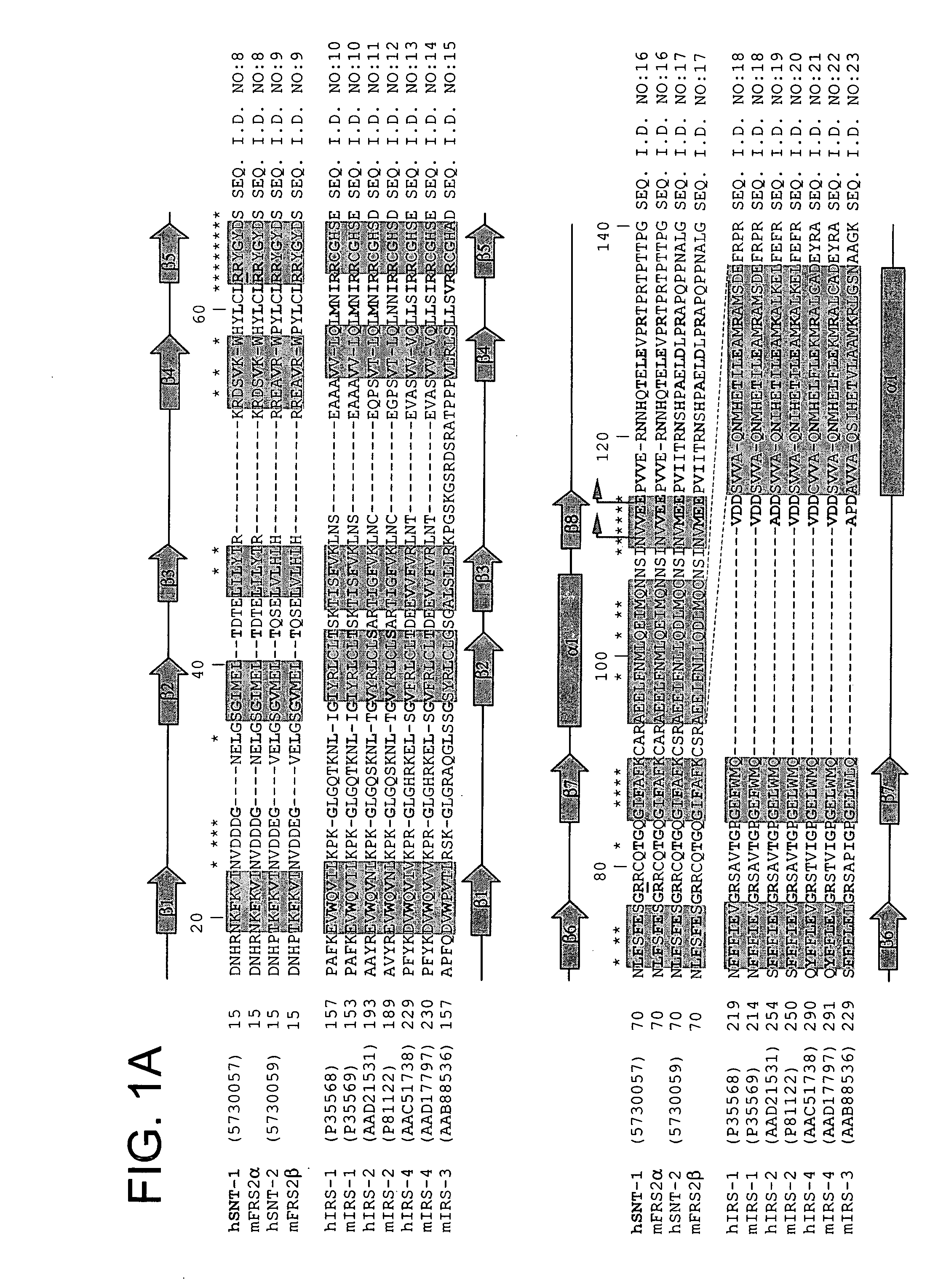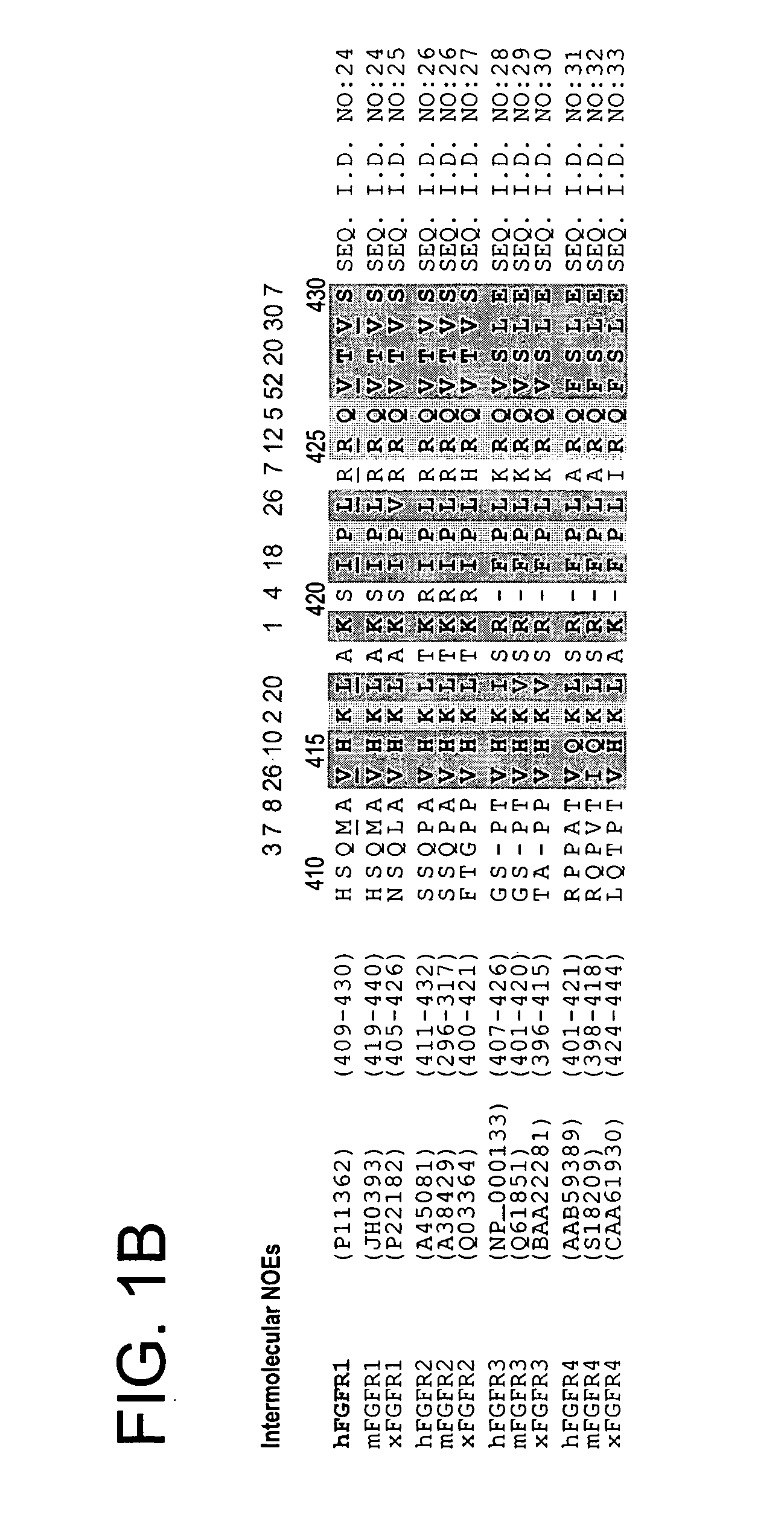Methods of indentifying modulators of the FGF receptor
a modulator and indentification technology, applied in the field of indentification of modulators of the fgf receptor, to achieve the effect of modulating the stability of the snt/fgfr complex
- Summary
- Abstract
- Description
- Claims
- Application Information
AI Technical Summary
Benefits of technology
Problems solved by technology
Method used
Image
Examples
example
The Three-Dimensional Structure of the SNT-1 PTB Domain With the FGF Receptor
Introduction
[0148] Phosphotyrosine binding (PTB) domains represent a group of structurally related but functionally divergent protein modules that play an important role in regulating protein-phosphotyrosine, protein-phospholipids, or protein-protein interactions [Pawson, and Scott, Nature 278: 2075-2080 (1997); Zhou and Fesik, Prog. Biophys. Molec. Biol. 64:221-235 (1995)]. The amino-terminal PTB domains of the newly discovered lipid-anchored docking proteins SNT-1 and SNT-2 have been shown to possess a unique ability to recognize both a canonical NPXpY motif on the activated nerve growth factor (NGF) receptor, and a tyrosine and asparagine-free motif on the fibroblast growth factor (FGF) receptor [Xu et al., J. Biol. Chem. 273:17987-17990 (1998); Kouhara et al. Cell 89:693-702 (1997); Meakin et al., J. Biol. Chem. 274:9861-9870 (1999)].
Materials and Methods
[0149] Sample Preparation: A cDNA fragment en...
PUM
| Property | Measurement | Unit |
|---|---|---|
| pH | aaaaa | aaaaa |
| Tm | aaaaa | aaaaa |
| Tm | aaaaa | aaaaa |
Abstract
Description
Claims
Application Information
 Login to View More
Login to View More - R&D
- Intellectual Property
- Life Sciences
- Materials
- Tech Scout
- Unparalleled Data Quality
- Higher Quality Content
- 60% Fewer Hallucinations
Browse by: Latest US Patents, China's latest patents, Technical Efficacy Thesaurus, Application Domain, Technology Topic, Popular Technical Reports.
© 2025 PatSnap. All rights reserved.Legal|Privacy policy|Modern Slavery Act Transparency Statement|Sitemap|About US| Contact US: help@patsnap.com



